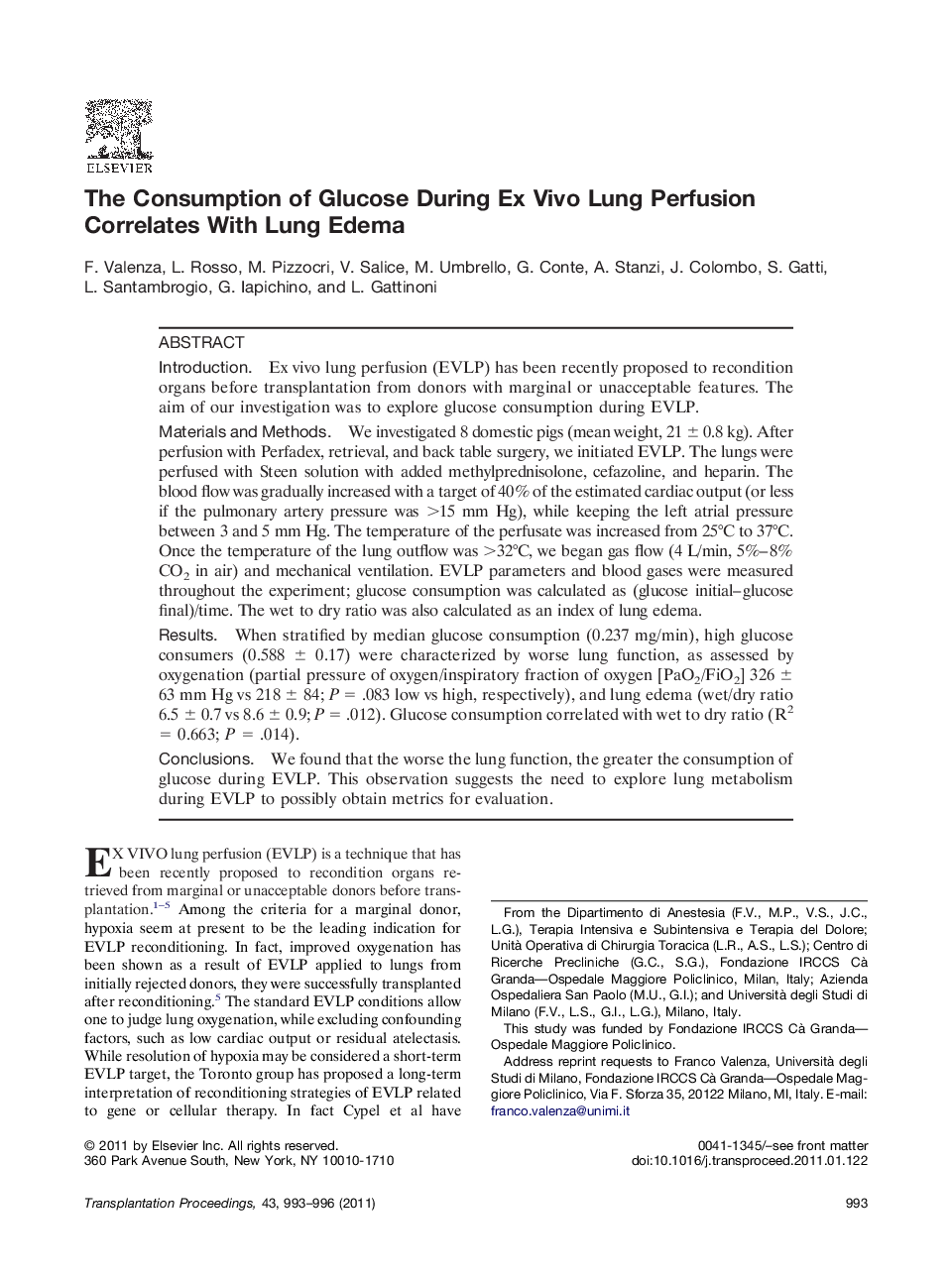| Article ID | Journal | Published Year | Pages | File Type |
|---|---|---|---|---|
| 6249399 | Transplantation Proceedings | 2011 | 4 Pages |
IntroductionEx vivo lung perfusion (EVLP) has been recently proposed to recondition organs before transplantation from donors with marginal or unacceptable features. The aim of our investigation was to explore glucose consumption during EVLP.Materials and MethodsWe investigated 8 domestic pigs (mean weight, 21 ± 0.8 kg). After perfusion with Perfadex, retrieval, and back table surgery, we initiated EVLP. The lungs were perfused with Steen solution with added methylprednisolone, cefazoline, and heparin. The blood flow was gradually increased with a target of 40% of the estimated cardiac output (or less if the pulmonary artery pressure was >15 mm Hg), while keeping the left atrial pressure between 3 and 5 mm Hg. The temperature of the perfusate was increased from 25°C to 37°C. Once the temperature of the lung outflow was >32°C, we began gas flow (4 L/min, 5%-8% CO2 in air) and mechanical ventilation. EVLP parameters and blood gases were measured throughout the experiment; glucose consumption was calculated as (glucose initial-glucose final)/time. The wet to dry ratio was also calculated as an index of lung edema.ResultsWhen stratified by median glucose consumption (0.237 mg/min), high glucose consumers (0.588 ± 0.17) were characterized by worse lung function, as assessed by oxygenation (partial pressure of oxygen/inspiratory fraction of oxygen [PaO2/FiO2] 326 ± 63 mm Hg vs 218 ± 84; P = .083 low vs high, respectively), and lung edema (wet/dry ratio 6.5 ± 0.7 vs 8.6 ± 0.9; P = .012). Glucose consumption correlated with wet to dry ratio (R2 = 0.663; P = .014).ConclusionsWe found that the worse the lung function, the greater the consumption of glucose during EVLP. This observation suggests the need to explore lung metabolism during EVLP to possibly obtain metrics for evaluation.
